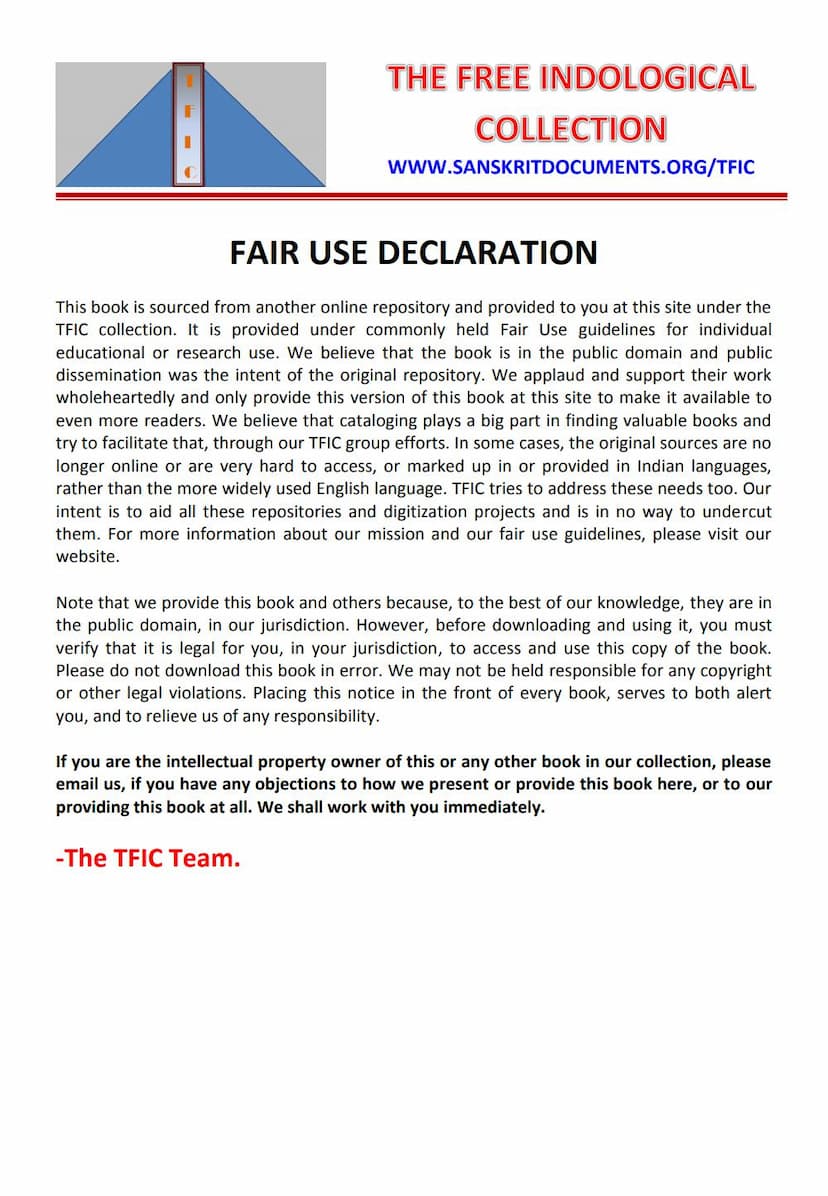Jain Shila Lekh Sangraha Part 4
Added to library: September 2, 2025

Summary
This is a comprehensive summary of the Jain Shila Lekh Sangraha Part 4 by Vidyadhar Johrapurkar, published by Bharatiya Gyanpith. This volume is a crucial collection of Jain inscriptions, contributing significantly to the historical understanding of Jainism.
Key aspects covered in the book:
-
Scope and Content: This volume, Part 4 of the Jain Shila Lekh Sangraha series, compiles a substantial number of Jain inscriptions. It builds upon previous volumes, incorporating inscriptions published after 1908. The book contains a total of 754 inscriptions, chronologically arranged.
-
Chronological and Geographical Distribution: The inscriptions span a wide period, from the 4th century BCE to the 19th century CE. They are geographically distributed across various regions of India, with a significant presence in the South, particularly Mysore, Madras, and Maharashtra, but also including Uttar Pradesh, Bihar, Bengal, Gujarat, Madhya Pradesh, Odisha, and other areas.
-
Purpose of the Inscriptions: The inscriptions are categorized based on their primary purpose:
- Descriptions of the construction or renovation of Jain temples.
- Details about the installation of Jain idols.
- Records of donations of villages, land, gold, and other resources to temples and monks.
- Mentions of the samadhi-marana (voluntary sallekhana) of monks, lay followers, and women.
- Other inscriptions covering topics like house construction, financial transactions of monasteries, sectarian agreements, and the eradication of social evils.
-
Analysis of Jain Sanghas: A significant portion of the introductory and analytical sections of the book focuses on the introduction and historical development of various Jain sanghas (sects or branches). The text meticulously details:
-
Yāpanīya Sangha: Tracing its existence from the 6th century to the 13th century CE through various inscriptions, mentioning its various gaṇas (sub-sects) like Kumudigana, Puṇṇāgāvṛkṣamūla gaṇa, Kaṇḍūra gaṇa, and Kāreyagaṇa.
-
Mūlasangha: This is extensively covered, detailing its various gaṇas and their historical presence through inscriptions. The six traditions mentioned are:
- Sena Gaṇa: Its antiquity is traced back to the 8th century CE, discussing its sub-sects like Pōgari Gaccha, Candrakavāṭa anvaya, and Pustakagaccha.
- Dēśī Gaṇa: Its various traditions are discussed, including Pustakagaccha (with sub-sects like Paṇasōge and Ingulēśvara), Āryasaṅgrahakula, Candrakācāryāmnāya, and Māṇyānvaya.
- Sūrastha Gaṇa: Tracing its existence from the 10th to the 12th century CE, mentioning its sub-sects like Kōkar Gaccha and Citrakūṭānvaya.
- Valagāra (Bhallāṭakār) Gaṇa: Its presence is noted from the 11th to the 14th century CE, discussing its connection with Sarasvatīgaccha.
- Krāṇūra Gaṇa: Documenting its existence from the 10th to the 16th century CE, detailing its sub-sects like Tintrīṇī Gaccha, Mēṣapāṣāṇa Gaccha, and Pustakagaccha.
- Nigmānvaya: Its mention in inscriptions from the 14th century CE is highlighted.
-
The book notes that Mūlasangha itself is mentioned in about 15 inscriptions without specifying a particular subdivision.
-
-
Dynastic Patronage: The inscriptions provide valuable information about the patronage of Jainism by various ruling dynasties in India. The volume discusses the support received from:
- Ganga Dynasty: Highlighting their significant patronage from the 5th century to the 10th century CE.
- Kadamba Dynasty: Mentioning their early support from the 6th century CE, and later as feudatories of larger empires.
- Rashtrakuta Dynasty: Detailing their involvement from the 6th century CE, with numerous inscriptions indicating their support.
- Pāṇḍya Dynasty: Noting their patronage from the 7th century CE.
- Pallava Dynasty: Their mention in three inscriptions from the 6th to 8th centuries CE.
- Chalukya Dynasty: This dynasty is extensively covered due to the large number of inscriptions (58) related to them, spanning from Badami to Kalyani Chalukyas.
- Chola Dynasty: Their patronage is seen in about 25 inscriptions, with specific royal orders and donations mentioned.
- Hoysala Dynasty: A significant number of inscriptions (around 30) are attributed to them, showing their continuous support.
- Kālaturyas: Their involvement is noted in seven inscriptions.
- Yadava Dynasty: Mentioned in 15 inscriptions.
- Vijayanagara Dynasty: Around 20 inscriptions document their patronage.
- Minor Southern Dynasties: Including Nolambavansa, Santar Dynasty of Humacha, Sindha Dynasty, and Ratta Dynasty.
-
Linguistic and Paleographic Analysis: The book provides details about the script and language of the inscriptions. Most are in Prakrit, Sanskrit, Kannada, Tamil, or Telugu, with the script primarily being Brahmi (the ancestor of Nāgarī) and its variations.
-
Methodology and Significance: The book's introduction by the chief editors (Heera Lal Jain and Adinath Nemnath Upadhye) emphasizes the critical role of these inscriptions in reconstructing the authentic history of Jainism. They also provide important notes for researchers regarding the fidelity of the original text, the potential for confusion between similarly named Acharyas, and the understanding that these inscriptions do not represent a complete list of all historical figures. The editors express gratitude to Dr. Vidyadhar Johrapurkar for his diligent work.
-
Appendices: The volume includes appendices that list Shvetambara inscriptions and Jain individuals mentioned in non-Jain inscriptions, providing further context and cross-referencing possibilities. It also includes a description of temples and idols mentioned and a comprehensive index.
In essence, Jain Shila Lekh Sangraha Part 4 is an indispensable resource for scholars, researchers, and anyone interested in the historical evolution, geographical spread, key figures, and socio-religious context of Jainism in ancient and medieval India, as evidenced by epigraphic records. It makes a vast collection of primary source material accessible and analyzed.